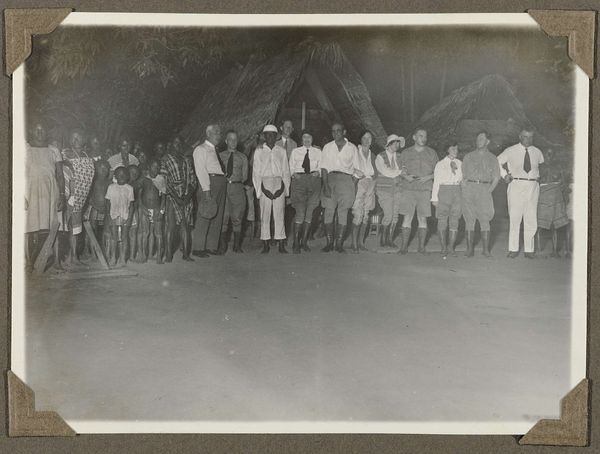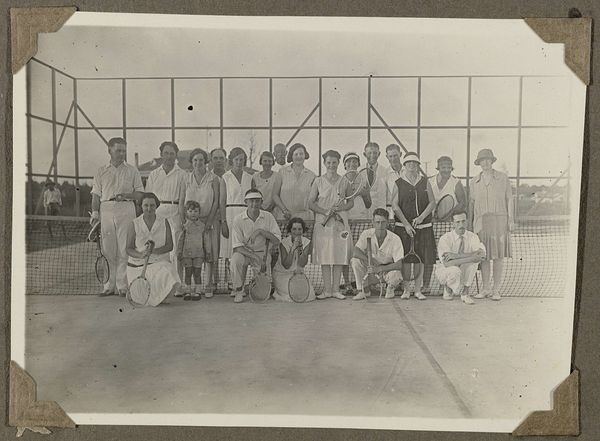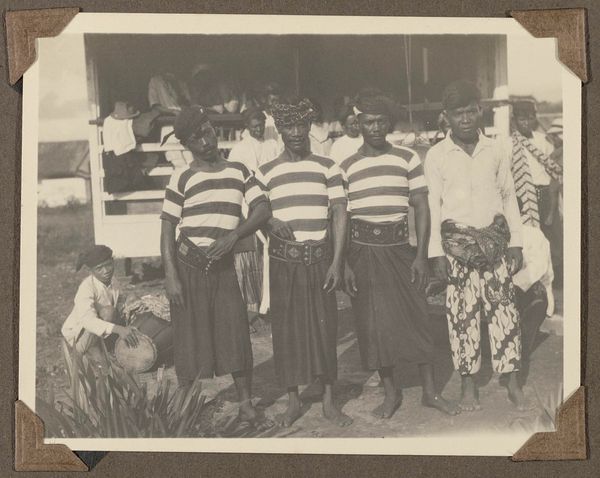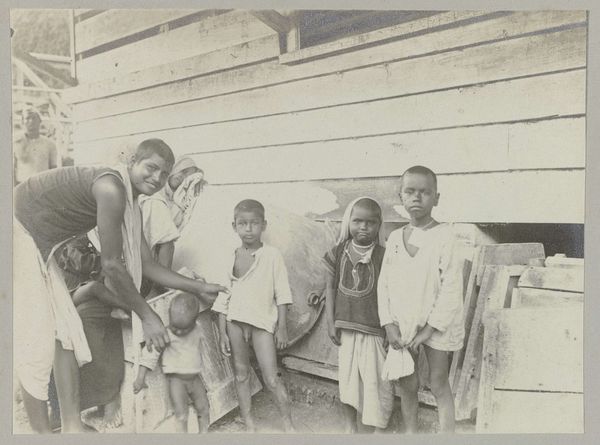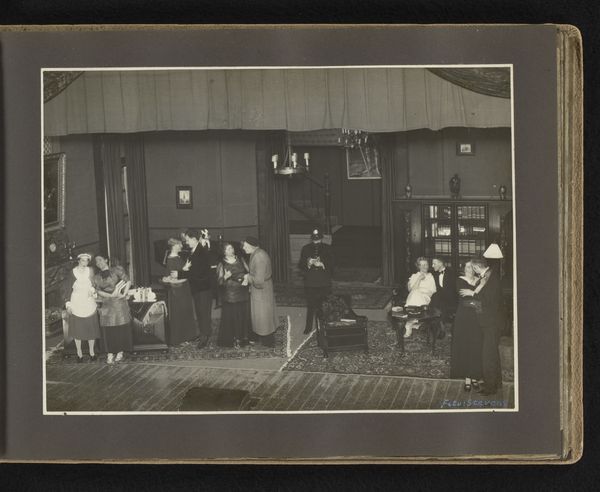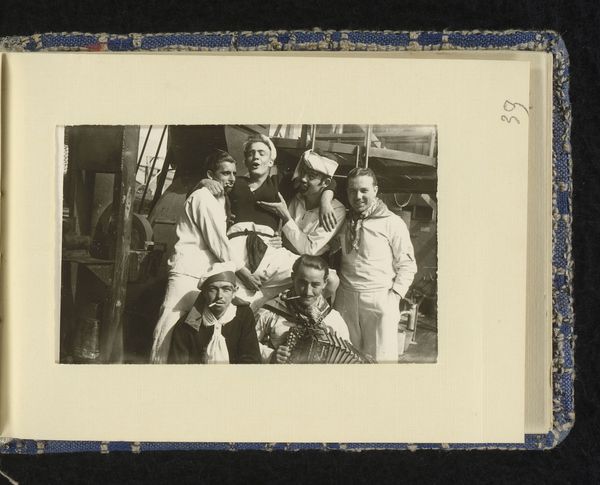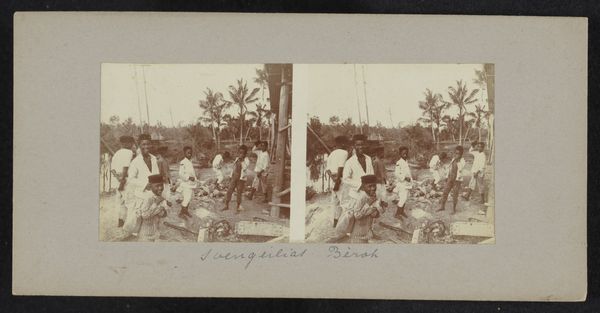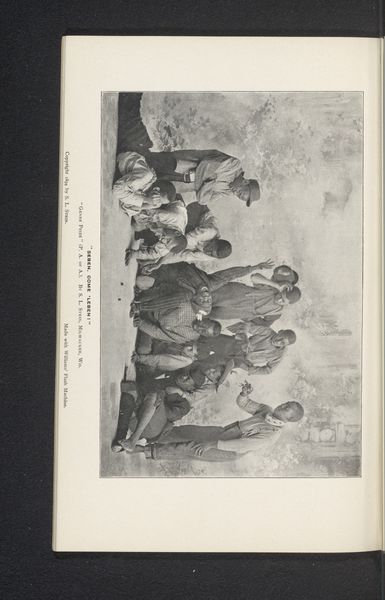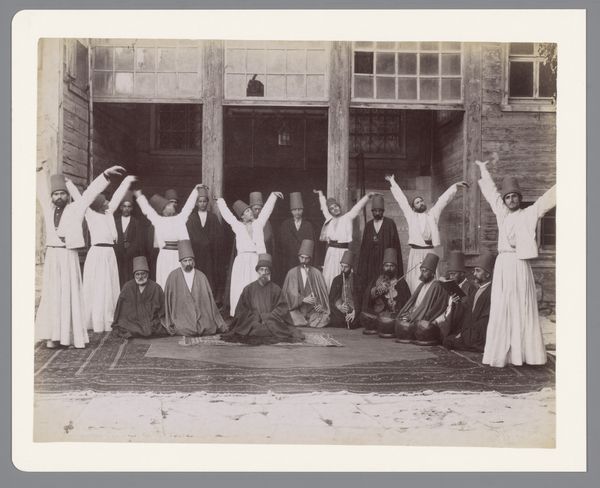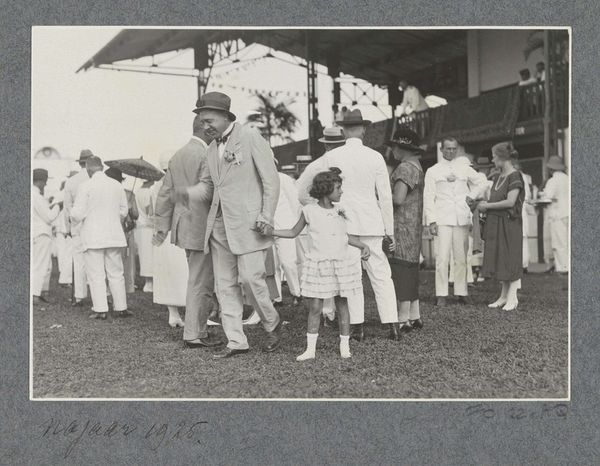
photography, gelatin-silver-print
#
print photography
#
archive photography
#
photography
#
culture event photography
#
historical photography
#
gelatin-silver-print
Dimensions: height 84 mm, width 116 mm
Copyright: Rijks Museum: Open Domain
Editor: This gelatin silver print, titled "Dansende Marron Vrouwen," which translates to "Dancing Maroon Women," dates from around 1925-1927. The photograph shows a group of women dancing, observed by onlookers. I'm struck by the contrast between the active figures and the static audience. What strikes you about it? Curator: It's fascinating how this photograph encapsulates the dynamics of labor and leisure, observer and observed. The medium itself, gelatin silver print, signifies a specific technology of image production, inherently linked to colonial projects. Consider the social context: What does it mean to document, and thus potentially commodify, the cultural practices of the Maroon people? Who controlled the means of photographic production and distribution here, and how might that affect what we are seeing? Editor: That's a compelling point about commodification. It's hard to ignore the colonial gaze in this photograph, the power dynamics implicit in capturing this dance for a seemingly Western audience. What is the effect? Curator: Precisely! Look closely at the clothing, the objects, the very stage on which this dance is performed. Are these materials authentic to Maroon culture or were they mediated and provided? Examining the materiality challenges any romantic ideas about authentic tradition. Editor: So, you’re saying the performance itself might be shaped by the conditions of its production? Almost as though it's for show for the visitors, the act of recording alters the art. Curator: Exactly! Consider what labor went into constructing the scene for the camera versus what we see for the purpose of a community-driven performance. Both are significant cultural productions, with each speaking to the power dynamics at play during this moment in time. What would we see differently without that foreign influence? Editor: This has made me look beyond just the surface representation and consider the social and material forces shaping the image. It highlights a darker aspect about capturing culture. Thanks! Curator: It's a reminder that art, even documentary photography, is never neutral. Looking through a lens of materialism offers tools to interrogate art’s relationship with social, economic and colonial structures.
Comments
No comments
Be the first to comment and join the conversation on the ultimate creative platform.
